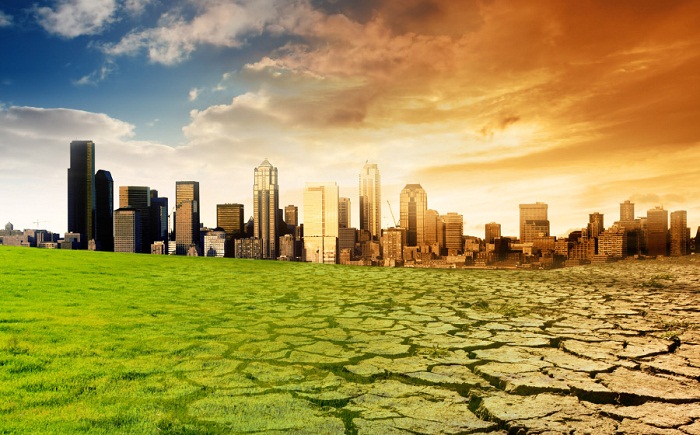So, we’ve almost made it to the finish line. 2020 is drawing to a close. But it is also the start line as we look forward to 2021.
For many, including myself, 2020 was more than a bumpy ride – it was a tumultuous rollercoaster with scary ups and downs. Sometimes the light at the end of the tunnel was very hard to see.
Now that 2020 is almost in the rear view mirror, it is time to reflect and look forward to 2021. There is still lots to do in the world that excites me and fills me with a sense of purpose: I want to contribute to the worldwide effort to make The Paris Agreement a reality.
Hopefully, the battle against Covid will play a smaller role in 2021 than it did in 2020. Its tragic consequences will surely abate as vaccines become available – hopefully in all parts of the world for all income groups. When that happens, there will be more bandwidth available for the pressing issues of decarbonisation and greenhouse gas emissions reduction.
Industrial gases will always be part of the solution
The lifesaving role that the industrial gases sector has played bringing medical oxygen to Covid-19 patients has undoubtedly been our major achievement of 2020. In 2021, we can also play a leading role to contain climate change within the most ambitious 1.5°C target.
Hydrogen, one of the major industrial gases, will play a major role in the energy transition. Carbon capture and storage is a technology that involves gas purification, compression and distribution where our expertise can be applied. We can also play a role to minimise emissions of other greenhouse gases such as fluorocarbons and nitrous oxide.
For the industrial gases sector, the consequences of The Paris Agreement reach far beyond the opportunity to apply our technology, products and expertise to help others. We must also get our own house in order. Industrial gases businesses and operations must change significantly to become carbon neutral and eliminate greenhouse gas emissions.
Tangible actions for positive change
Our air separation units consume many megawatts (MW) of power. We can transition to use renewable electricity to produce air gases. Steam methane reformers in our asset base consume natural gas to make hydrogen and emit carbon dioxide as a by-product. We can mitigate that with carbon capture and utilisation, or storage. Or we can transition to ‘green’ hydrogen production using electrolysers fed with renewable electrical power.
For our customers, we can offer refrigerant gases such as R1234yf, propane and ammonia that have low, or zero, global warming potential. And we can support the reclaim, reuse and responsible disposal of F-Gases that are in the market today.
We can supply high precision specialty gas mixtures to enable emissions monitoring of carbon dioxide, nitrous oxide and methane – three of the most potent and abundant greenhouse gases. Our technologies that enable biogas upgrades to biomethane will have a positive impact. And we can offer bulk and tonnage gas supply schemes that are carbon neutral.
We have the opportunity to serve and we bear the responsibility to change.
2020 – Panic or pivot?
The Covid pandemic in 2020 led to the sharpest and deepest economic crisis that the world has experienced since 2008. To stimulate economic recovery and bridge the gap, spending and borrowing by many governments has risen to levels reminiscent of the post-war reconstruction era.
The pandemic has triggered reactions in fiscal and monetary policy. Was there panic? Or was there a purposeful pivot towards greater environmental awareness with many of the spending commitments being directed towards decarbonisation?
The placards that we see on Friday afternoons on the streets of many cities urge immediate action.
“There is no planet B.”
“Act as if your house is on fire: it is.”
Within our industry, is there the need to panic? Do we have time to wait? As we enter the next decade, this is the moment to pivot and set a new direction.
2021 – Survive, or thrive?
The past year has been tough. And tiring. It would be tempting to set a target of survival for 2021. Just keep the business afloat; just keep the people on board; just keep the customers supplied; just keep paying the bills and collecting the cash.
But if we can dig deep into our reserves of ambition and creativity, we might find the motivation to pivot from the mindset of survive to thrive. Let’s rethink the product portfolio – is it as green as it could be? How about a review of the power and energy sourcing arrangements – do we have enough renewables in the mix? What can carbon capture and storage mean as an opportunity to serve with technology and a route to decarbonise industrial gas production? What business opportunities will the hydrogen economy present us?
Making the change will require resources. It will pull for bandwidth, time, focus and capital. But I am optimistic that the investment will pay back. Many equity investors have rejected fossil-fuel energy stocks and placed their bets on the green economy. The Dow Jones Sustainability Index (DJSI) matters more and more.
I am convinced that the environmental impact changes that the industrial gases sector needs to make can be equally good for the planet, people, profits and stock prices. It’s not one or the other. They can all thrive together.
A career spanning 30 years in the industrial gases, energy and chemicals sectors has given Stephen B. Harrison significant exposure to multiple aspects of the hydrogen economy. Harrison worked in business, engineering and operational roles for BOC Gases and Linde Gas at a senior global executive level, then and as a consultant at sbh4 GmbH. At BOC he operated SMR plants for hydrogen production. At Linde he managed a business that included a range of hydrogen electrolysers for sale or lease to customers.
The original article was published in the gasworld.com.
More about:
















































